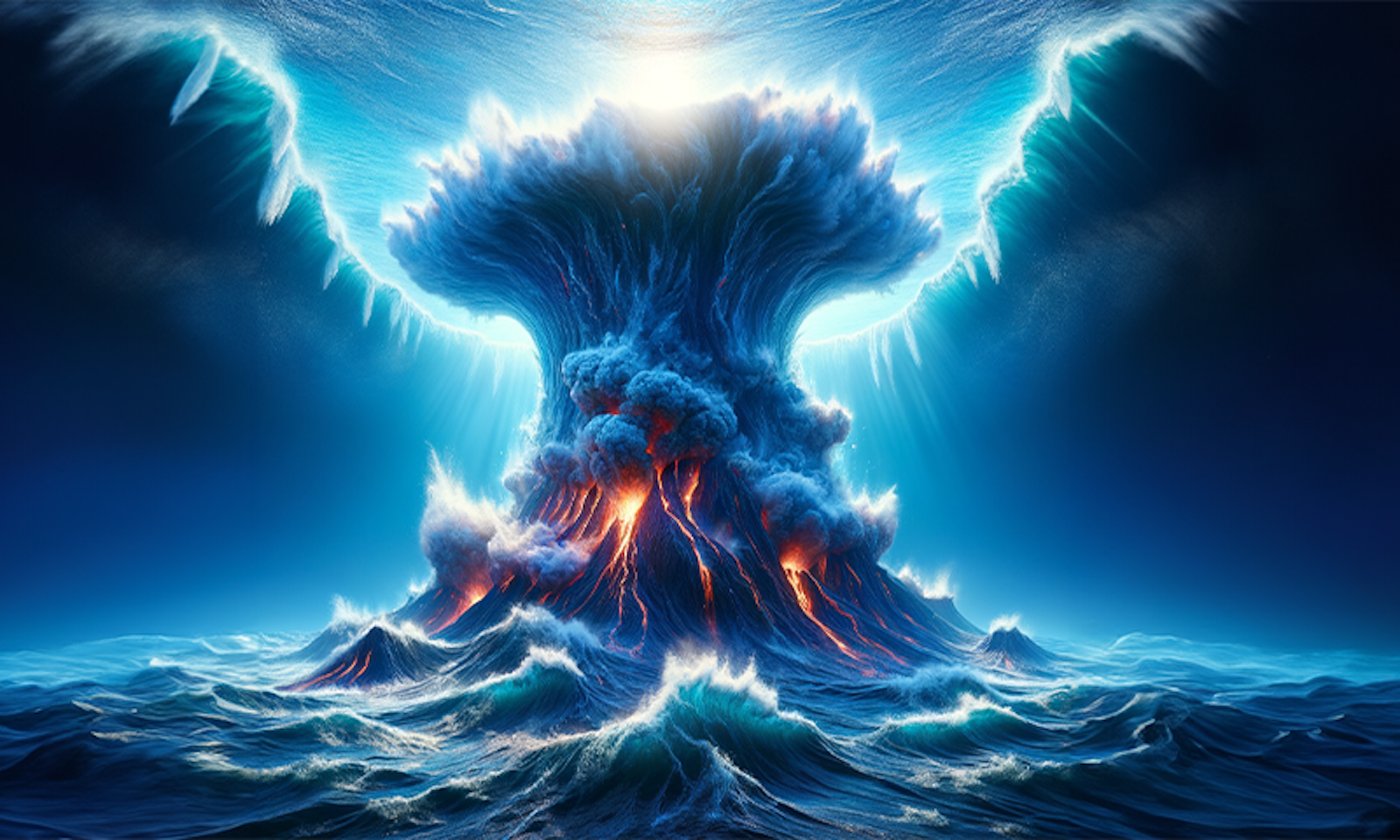After centuries in repose, volcanoes may reawaken, clear their throats, let off steam, and, if provoked, explode. As in human fits of rage, a volcano’s violent outburst is often self-amplifying: Their response to a small disturbance can feed on itself, spiraling into a tantrum. As a result, a furious eruption can arise from a relatively modest trigger, making some outcomes—like a devastating tsunami—unpredictable.
Volcanic eruptions are always formidable, but they’re especially perilous underwater, where cause and effect may become entangled, each fueling the other. A recent study published in Nature Communications vividly illustrates this, taking advantage of new imaging data and simulations to reconstruct the murky events beneath the Aegean Sea that caused a destructive tsunami in 1650. The results could help make tsunami-warning systems more effective, the researchers say, because reliable early warnings depend on understanding the temperament of submerged volcanoes.
The volcano, Kolumbo, whose eruption is linked to the 1650 tsunami, is part of an infamous family of volcanic islands and seamounts known collectively as the Hellenic Arc. The most notorious of these is Thera, or Santorini, whose catastrophic eruption around 1600 B.C. devastated the Minoan civilization and is a perennial favorite on lists of possible sites for Plato’s lost city of Atlantis. Although the 17th-century eruption of Kolumbo was far smaller, it generated a tsunami 66 feet high on the island of Ios a dozen miles north.
The new study combines eye-witness accounts of the 1650 tsunami—including observations from Santorini that the seas had retreated before the wave struck—with detailed maps of the seafloor’s shape, imaging of the volcano’s insides from seismic wave data, photographs of the crater taken by a remotely operated submarine, and computer modeling of how tsunamis form. Scientists have previously attributed volcano-related tsunamis to underwater earthquakes triggered by the molten rock moving beneath the seafloor, or an explosive discharge of volcanic gasses, or the collapse of a volcano after it ejects its molten contents—or some nightmarish combination of these.
It was like a gargantuan, deadly, bottle of champagne being uncorked.
But the new data gathered from Kolumbo point to another compelling scenario that could create a wave with the height and power described in historical records: the collapse of one flank of the volcano in a massive submarine avalanche. The seafloor map shows a series of terraces on the northwest side of the volcano. That’s probably how it would end up if a huge volume of material slid down the volcano’s slope, stacking up on itself like a chain-reaction pile-up on a highway. According to seismic imaging of the volcano, which reveals its interior architecture, faults in loose volcanic sediment caused the terraces to form. Counterintuitively, however, the researchers suggest that this colossal submarine landslide was not only the result—but also a cause—of Kolumbo’s eruption.
Sometime in the years before the tsunami, they suggest, Kolumbo began to have small eruptions of gassy magma, spewing powdery ash. This loose material started to accumulate, unstably, on top of ash and broken rocks from previous eruptions on the volcano’s flanks. Then one day, a large mass on the northwest side broke away from the summit and slid down. This dramatic relocation of matter left a void for the overlying seawater to fill, setting in motion a giant wave that rippled toward nearby islands, where the sea briefly retreated before slamming into the coasts, striking Ios with the greatest energy.
Meanwhile, the sudden removal of so much weight from the surface of the volcano itself destabilized the magma chamber deep inside, like a gargantuan, deadly, bottle of champagne being uncorked. Carbon dioxide and other gasses that had been dissolved in the magma when the volcanic “lid” was on came bubbling violently out. This, in turn, abruptly lowered the magma’s density, propelling it to the surface in an explosion 10 times larger than the 1980 eruption of Mount Saint Helens in Washington State, which unleashed the energy of 25,000 atomic bombs.
The authors emphasize that this scenario, in which a series of modest, gassy eruptions set in motion a chain of ruinous events, is a sobering lesson for those who strive to protect the public from natural disasters. Volcanoes, like volatile people, may sometimes give no clear sign about what they are about to do. The challenge for tsunami prediction is to recognize which volcanoes vent quietly, and which ones just can’t seem to control themselves. ![]()
Lead image: Shutterstock AI Generator / Shutterstock




























